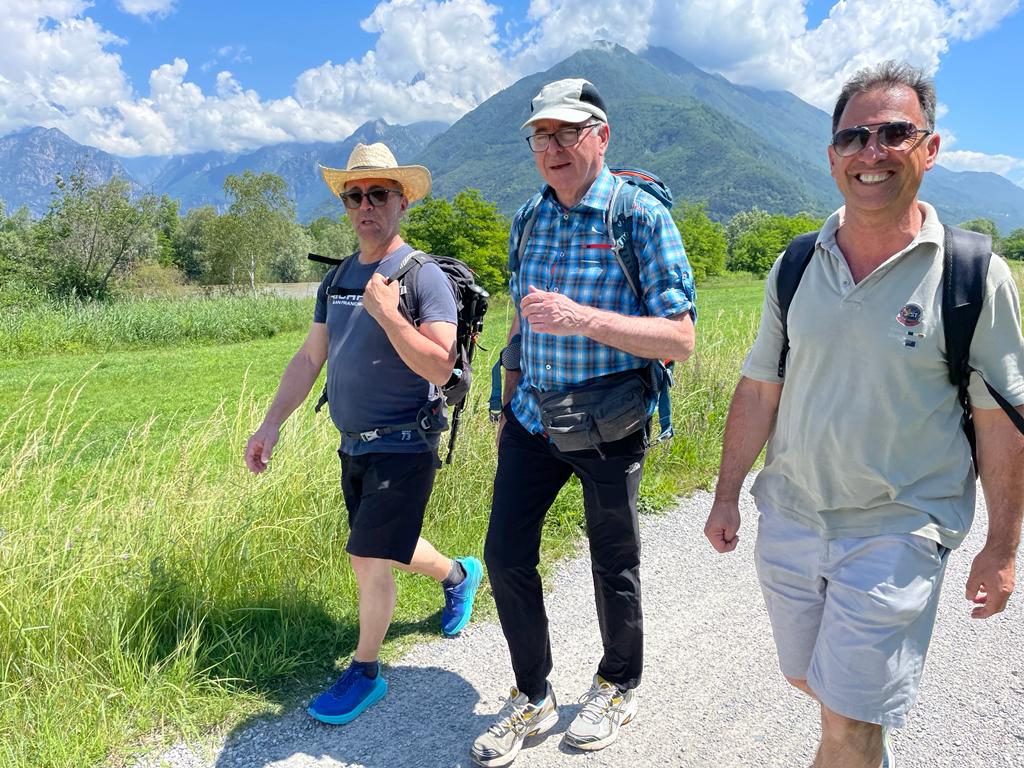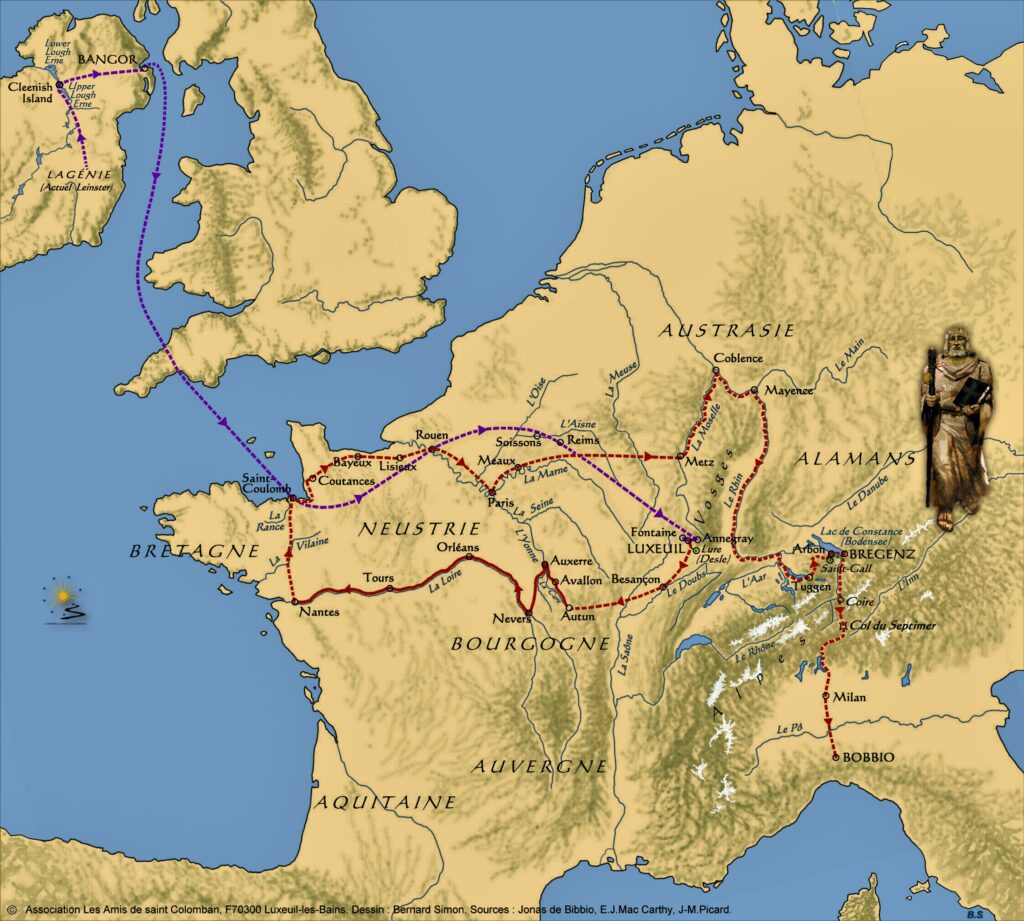
Irish monk, St Columban, is recognised as one of the great pilgrims in history. In his lifetime he walked over 5000km between Ireland and Bobbio in Italy where he died. Cristian Colombo of the Association of Friends of St Columban in Italy writes about the completion of the Columban Way in Italy, its recognition by the Italian Tourist Board, and how the trail links in with preparations for the Church’s Jubilee Year in 2025.
It all began with the dream. In the dream, the sun descended into the womb of a woman. This sun would escort the world out of darkness. St Columban’s mother dreamt that fourteen centuries ago in 543AD prior to giving birth to her son. Columban would later pioneer the concept of European unity and be acknowledged as a saint by both the Catholic and Anglican Churches.
St Columban’s mission: Peregrinatio pro Christo is about journeying and perpetual travel in the name of the Lord. It continues to resonate today with the Columban community who seek to spread the Irish monk’s message.
The Columban Way is a Europe-wide route that crosses from north to south, linking up a network of historic sites associated with St Columban, from Ireland, across England, through France, Germany, Switzerland, Austria, Liechtenstein and into Italy.
As it develops, this heritage trail is becoming one of the great pilgrimage routes of Europe, along with the Camino de Santiago.
The Columban Way celebrates the heritage of the ‘Irish missionary movement’ of the 6th to 8th centuries, in particular the story of the monks, St Columban or Columbanus and St Gall, who travelled across Europe during a period of great turbulence and conflict, founding monastic communities that would flourish until the late middle ages.
The European Association of the Columban Way has supported and researched the development of the heritage trail, using anecdotes recorded by Jonah of Bobbio in the Vitae Sancti Columbani and beginning with Columban’s initial journeys in his native Ireland and ending in Bobbio.

It is a cultural and religious project aimed at tracking one of the oldest paths in European history through historic villages and settlements against the backdrop of rural landscapes, lakes and mountainous areas, across eight countries: Ireland, England, France, Germany, Switzerland, Austria, Liechtenstein and Italy.
The legacy of St Columban inspired a bold dream in 2014, with the outlining of this route by the European Association of the Columban Way.
It culminated with the inclusion of the final 330 kilometers, corresponding to the Italian section of the route, in the Catalogue of Italian Religious Paths on 3rd March 2023.
This puts the Columban Way trail in Italy on the map for the Catholic Church’s 2025 Jubilee Year as a route. Three associations founded on the Columban spirit of fraternity have contributed to the mapping and development of the route.
They are the Associazione Amici del Camminodi San Colombano of Vaprio d’Adda (from the Swiss border to Milan), Associazione Amici di San Colombano per l’Europa of San Colombano al Lambro (from Milan to the ford of Sigerico) and by Associazione Amici di San Colombano of Bobbio for the last part of the pilgrim route.
The stretch from Milan to the tomb of St Columban in Bobbio (150 kilometers) is structured in eight stages based on the model of the Camino de Santiago.
Stamps certifying a pilgrim’s credentials and a testimonium or a religious certificate signed by the religious authorities of Bobbio will be issued to those who complete the pilgrimage route at the tomb of St Columban in Bobbio.
Those who travel less than the 150 kilometers prescribed for obtaining the testimonium, can still be awarded a Chartula Peregrini, a certificate given to all pilgrims arriving in Bobbio regardless of the distance travelled.
The Carthula recognises that it is not the distance travelled that makes the pilgrim, but the spirit with which he or she arrives in Bobbio.
In this way anyone who completes the last few kilometers will be able to call to mind and be empowered by the work of a great evangeliser who combined prayer with work and study, embodying that Irish vocation to become a pilgrim.
This abandonment of one’s own land and people, entailed a voluntary exile in the name of faith, as a pilgrim missionary living forever without a homeland, as a foreigner in a foreign place, conscious that they were on their way to the true homeland that is not of this world.
For more information see: https://www.thecolumbanway.org/en/home/